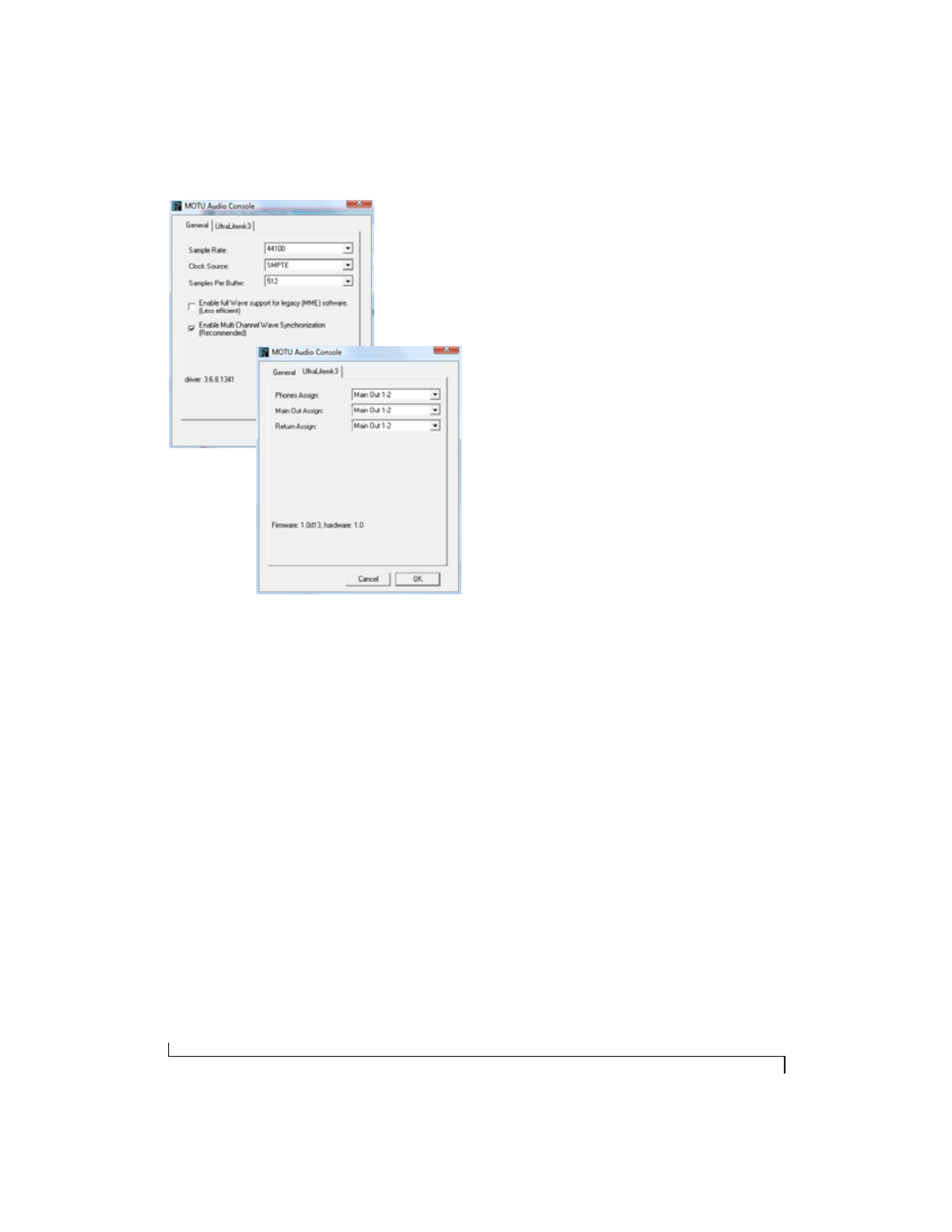Sample rate, Clock source, Samples per buffer – MOTU UltraLite-mk3 - Hybrid FireWire/USB 2.0 Audio & MIDI Interface User Manual
Page 44: Phones

C U B A S E , N U E N D O , L I V E A N D O T H E R A S I O S O F T W A R E
44
Figure 7-1: MOTU Audio Console gives you access to all of the settings
in the UltraLite-mk3 hardware, including the clock source and
sample rate.
For complete details about the UltraLite-mk3
settings, see chapter 5, “MOTU Audio Console”
(page 29). The following sections provide a brief
explanation of each UltraLite-mk3 setting for use
with Cubase.
Sample rate
Choose the desired overall sample rate for the
UltraLite-mk3 system and Cubase. Newly recorded
audio in Cubase will have this sample rate.
Clock Source
This setting is very important because it
determines which audio clock the UltraLite-mk3
will follow.
If you do not have any digital audio connections to
your UltraLite-mk3 (you are using the analog
inputs and outputs only), and you will not be
slaving Cubase to external SMPTE time code,
choose
Internal
.
If you have a S/PDIF digital audio device
connected to the UltraLite-mk3, see “Connecting
and syncing S/PDIF devices” on page 22.
If you are slaving the UltraLite-mk3 and Cubase to
SMPTE time code via the UltraLite-mk3 itself,
choose
SMPTE
and follow the directions in
“Resolving Cubase or Nuendo to SMPTE time
code” on page 105.
☛
If you are using an ASIO host application
other than Cubase or Nuendo, it must support the
ASIO 2.0 sample-accurate positioning protocol in
order to support the UltraLite-mk3’s direct SMPTE
sync (and sample-accurate sync) feature.
Samples Per Buffer
The
Samples Per Buffer
setting can be used to
reduce the delay — or
monitoring latency
— that
you hear when live audio is patched through your
UltraLite-mk3 hardware and Cubase. For example,
you might have MIDI instruments, samplers,
microphones, and so on connected to the analog
inputs of the UltraLite-mk3. If so, you will often be
mixing their live input with audio material
recorded in Cubase. See chapter 9, “Reducing
Monitoring Latency” (page 55) for complete
details.
Phones
This UltraLite-mk3 setting lets you choose what
you’ll hear from the headphone jack. For example,
if you choose
Main Out 1-2
, the headphones will
duplicate the main outs. Or you can choose any
other output pair. If you choose
Phones 1-2
, this
setting makes the headphone jack serve as its own